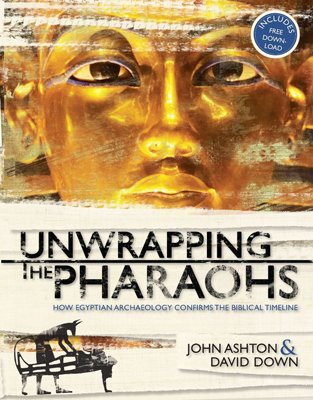
Chapter 13
The Mysterious Hyksos
The beginning of Dynasty 13 was a shambles. It is hard to say who were most confused—the kings who took over after Dynasty 12 ended or the historians trying to sort them out.
Manetho wrote, “The 13th Dynasty consisted of sixty kings of Diospolis who reigned for 453 years.” Then he allocates 184 years to Dynasty 14, 284 years to Dynasty 15, 190 years to Dynasty 16, and 151 years to Dynasty 17.1 Even if he meant these dynasties to be contemporary with each other it would still be impossible to sort them out.

Neferhotep I of Dynasty 13 was probably the pharaoh who refused to let the Israelites go. This statue of him is in the Bologna Museum in Italy.
The Cambridge Ancient History states, “From their number, the brevity of their reigns, and the evident lack of any continuous dynastic succession it would appear that the kings of the 13th Dynasty, dominated by a powerful line of viziers, were for the most part puppet rulers, holding their offices, perhaps by appointment or ‘election,’ for limited periods of time.”2
A measure of stability seems to have been restored under Neferhotep I whose statues are to be found in the Cairo and Bologna Museums. He was apparently the last king before the Asiatic slaves suddenly disappeared from Kahun. Dr. Rosalie David wrote in her book The Pyramid Builders of Ancient Egypt,
“Scarabs are useful in dating sites, because they are frequently inscribed with the names of current rulers. Here a scarab inscribed with the name of King Neferhotep of the 13th Dynasty, found in a room near the center of the town together with some papyri, is the latest dated object from the first occupation of the town, and can assist in establishing a chronology of events at Kahun.”3
So it may have been during the reign of Neferhotep I that Moses returned from Midian and confronted Pharaoh with the demand, “Let my people go,” to which the king haughtily replied, “Who is the Lord that I should obey his voice to let Israel go. I do not know the Lord, nor will I let Israel go” (Exodus 5:1–2). (In the Bible, when Lord is spelled with capital letters it means it has been translated from the Hebrew word Yehovah.)

Pharaoh’s magicians threw down their rods “and they became serpents” (Exodus 7:12). One of these rods from Dynasty 12 is in the Liverpool Museum. The magicians’ rods were in the form of the sacred serpent.
A second time Aaron and Moses confronted Pharaoh who demanded a miracle as proof that God had sent them. “And Aaron cast down his rod before Pharaoh and before his servants, and it became a serpent” (Exodus 7:10). But Pharaoh was not impressed. He “called the wise men and the sorcerers; so the magicians of Egypt, they also did in like manner with their enchantments. For every man threw down his rod, and they became serpents” (Exodus 7:11-12).
It is quite significant that in the Liverpool Museum there is a magician’s rod that came from this very period of Egyptian history. Apparently the magicians used these rods that looked like cobras, and perhaps using mesmerism, when they threw them down they appeared to be living snakes. [Answers in Genesis editors’ note: It should be noted that Aaron’s rod-serpent ate these, so it seems more likely that these were serpents of flesh.] This demonstration of hypnotic power by his magicians was enough to harden Pharaoh’s heart and he became more stubborn in his refusal to allow his slaves to depart.
Then followed nine drastic plagues on Pharaoh and his people. These plagues not only caused great loss to the Egyptians, but struck at the gods they worshiped. Moses struck the water in the river Nile and “all the waters that were in the river were turned to blood” (Exodus 7:20). Whether the water actually turned to hemoglobin or appeared red like blood may not be certain, but the result was the same: “The Egyptians could not drink the water of the river” (Exodus 7:21). [Answers in Genesis editors’ note: Since the Bible says that the water was turned to blood, we have no reason to doubt that it was actual blood, although we recognize that others allow for this explanation.]
This plague was no doubt directed against one of Egypt’s most important gods, the river god Hapy, who is depicted as tying upper and lower Egypt together. He was the fertility god.
Then came the plague of frogs. There were frogs everywhere—in their houses, in their bedrooms, and they even got mixed into the bowls in which they were kneading their bread. Presumably, they left the river when it became bloody and infested the homes of the people, who would have been rather disillusioned with their frog god Heqet. [Answers in Genesis editors’ note: We must leave open the possibility, however, that God specifically brought forth these frogs miraculously for the purpose of the plague.] This deity was reverenced as a creator of life, probably because they observed that tadpoles miraculously turned into frogs, but they would not now appreciate this god’s unwelcome appearance all over the land. Even Pharaoh was obliged to implore Moses to get rid of the frogs. Moses obliged and “the frogs died out” (Exodus 8:13).
With no frogs to keep them in check, the gnats and flies took over. [Answers in Genesis editors’ note: The Scriptures say that Aaron struck the dust with his rod and the dust became “lice” (translated as gnats and flies in some versions), so this does not seem a satisfactory explanation.] These were probably not just flies buzzing around making a nuisance of themselves, but the type of blowflies that inflicted a painful sting, and they swarmed into Pharaoh’s palace (Exodus 8:24). The king called for Moses and promised to let Israel go, but when the flies were removed, he quickly changed his mind.

One of the roads that ran through the city of Kahun where the Semitic slaves who built the pyramids of Dynasty 12 lived.
Then things took a turn for the worse for the Egyptians. A very popular deity was the cow goddess Hathor, and they also worshiped the Serapis bull, and these were the targets of the next plague. “All the livestock of Egypt died” (Exodus 9:6). This did not affect Pharaoh personally, and he only became more determined in his resistance.
The next plague was particularly harmful for Pharaoh’s magicians, who could not work enough magic to escape the epidemic. “The magicians could not stand before Moses because of the boils, for the boils were upon the magicians and on all the Egyptians” (Exodus 9:11). Pharaoh may have been exempted because he still refused to let Israel go.
The plague that followed was very unusual for the land of Egypt, where rain seldom falls and hail is almost unknown. “The hail struck throughout the whole land of Egypt, all that was in the field, both man and beast; and the hail struck every herb of the field and broke every tree of the field” (Exodus 9:25). What little greenery that was left was completely consumed in the eighth plague. Locusts “covered the face of the whole earth, so that the land was darkened; and they ate every herb of the land and all the fruit of the trees which the hail had left” (Exodus 10:15).
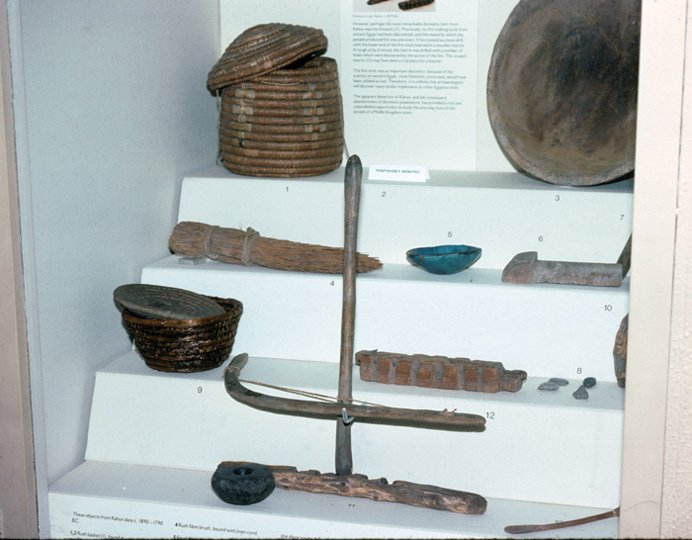
One of the objects left behind by the departing slaves was a fire stick twirled by a string attached to a bow to kindle a fire.
The ninth plague struck at the very heart of Egyptian religion—the sun god, worshiped under the names of Re, Harakhte, Aten, and others. “There was thick darkness in all the land of Egypt three days” (Exodus 10:22). The light of the sun was blotted out.
It was the last straw. Pharaoh was furious that his gods should be treated with such disdain. Get out of here, he said to Moses. “See my face no more! For in the day you see my face you shall die!” (Exodus 10:28).
The final plague struck right at the heart of the family, including Pharaoh’s family. All the firstborn in each Egyptian family died at midnight. The Israelites had been forewarned of this impending disaster, and Moses told them to kill a lamb and splash its blood on their doorposts. They were promised that the destroying angel would pass over every home thus marked. Jewish people all over the world still celebrate this annual Passover ceremony.
Dr. David’s book provided a revealing observation in chapter 8 entitled “Last years at Kahun.” She wrote, “It is evident that the completion of the king’s pyramid was not the reason why Kahun’s inhabitants eventually deserted the town, abandoning their tools and other possessions in the shops and houses.” She goes on to observe: “The quantity, range, and type of articles of everyday use which were left behind in the houses may suggest that the departure was sudden and unpremeditated.”4

A box now in the Manchester Museum. Petrie found many such boxes beneath the floors of the houses he excavated in Kahun. They contained the skeletons of babies up to three months old, sometimes three in a box. They were probably the bones of the Israelite babies who were killed on Pharaoh’s orders (Exodus 1:16).
Jewish people all over the world still celebrate the Passover service which commemorates the sudden departure of their forefathers from Egypt. This seems to be the only logical explanation for this strange archaeological evidence.
What a strange type of termination to national slavery. It seems most unlikely that slaves could suddenly pack up and leave en masse, yet this appears to be what happened. The only feasible explanation seems to be in the Hebrew record which says that Pharaoh “called for Moses and Aaron by night and said, ‘Rise and go out from among my people, both you and the children of Israel, and go serve the Lord as you have said.’ … And the Egyptians urged the people, that they might send them out of the land in haste” (Exodus 12:31–33).
The Israelites needed no second bidding. “Then the children of Israel journeyed from Rameses to Succoth, about six hundred thousand men on foot, besides children” (Exodus 12:37). From there they went to the Red Sea where “a strong east wind” drove a path through the water for them to pass to the Sinai Peninsula (Exodus 14:21). When Pharaoh and his army tried to pursue them “the waters returned and covered the chariots, the horsemen, and all the army of Pharaoh that came into the sea after them. Not so much as one of them remained” (Exodus 14:28).
Now if all this actually happened, there ought to be some Egyptian record of it. Two million people enslaved by the Egyptians suddenly leaving Egypt, and the entire Egyptian army destroyed overnight, and critics have not been slow in pointing out that not only is there no archaeological support for such records, but the evidence actually contradicts them, and if the traditional chronology for the dynasties of Egypt is accepted, we would have to agree with these conclusions.
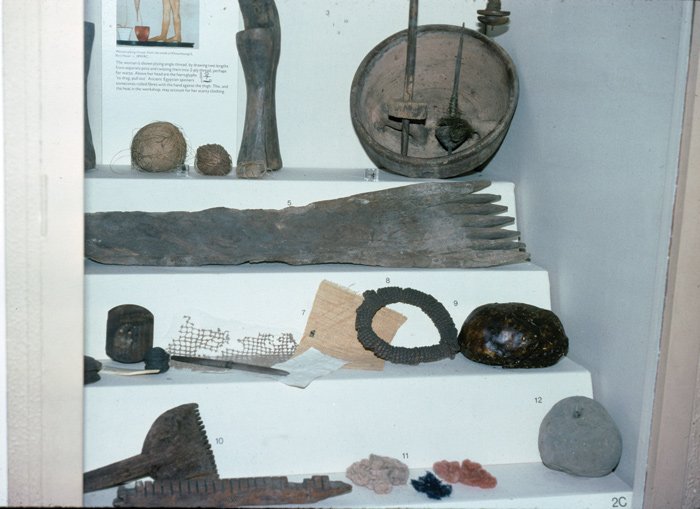
Objects that had been discarded by the occupants of Kahun were found by Petrie. They indicated that the city had suddenly been abandoned as would have happened when the Israelites left in the Exodus.
From the information supplied in 1 Kings 6:1, the Exodus must have occurred about the year 1445 B.C. By the usually accepted dates, this would have been during the 18th Dynasty, and it just does not fit there. The 18th Dynasty was a period of affluence and power. It has been argued that the Egyptians were not likely to record their losses or disasters, and that is true, but this dynasty was very well documented. They left more inscriptions about their activities than any other dynasty before or after. The name and length of reign of every king is known.
Inscriptions in papyri and on temple walls record their military victories and governmental activities, and there is no trace of any setback during this dynasty. Moreover, the 18th Dynasty had no palace in the delta where the Israelites were mostly concentrated. Moses could hardly have been commuting back and forth from Goshen in the delta to Luxor, where most of the 18th Dynasty activity was, or even Memphis. Moreover, all the mummies of this period are carefully preserved in the Cairo Museum. At least one of them should be at the bottom of the Red Sea.
Nor is there any archaeological evidence for an invasion of Canaan by a new people at this time. Jericho’s walls did fall flat, and the city was thoroughly destroyed by fire, but not in the archaeological period usually attributed to the Exodus. However, if a revised chronology is accepted, the biblical events synchronize perfectly with the archaeological evidence.

Statues of soldiers from the Middle Kingdom of Egypt. How could the Hyksos occupy Egypt “without a battle”? The army could have been at the bottom of the Red Sea (Exodus 14:28).
If the ten plagues on Egypt actually occurred, the country must have been devastated. It would be indeed strange if there was not some record of it, and there is. In 1828, the Leiden Museum in Holland acquired a papyrus which came from Memphis. It was written by a scribe called Ipuwer and gives a graphic description of conditions in Egypt at the time of his writing.
Archaeologists are not agreed about the exact time the document was originally written. It seems to have been made in the 19th Dynasty, but it could be a copy of a document made originally about the end of the 12th Dynasty. A reading of it sounds very much like an echo of the biblical account.
Nay, but the heart is violent. Plague stalks through the land and blood is everywhere. . . . Nay, but the river is blood. Does a man drink from it? As a human he rejects it. He thirsts for water. . . . Nay, but gates, columns and walls are consumed with fire. … Nay but men are few. He that lays his brother in the ground is everywhere. . . . Nay but the son of the high-born man is no longer to be recognized. . . . The stranger people from outside are come into Egypt. . . . Nay, but corn has perished everywhere. People are stripped of clothing, perfume, and oil. Everyone says “there is no more.” The storehouse is bare. . . . It has come to this. The king has been taken away by poor men. — Ipuwer Papyrus, Leiden Museum5
The route the Israelites took cannot be identified for sure. It is possible they crossed the Red Sea near Adabiya where it is only 4.3 miles (7 km) wide and the maximum depth is only about 26 feet (8 m). Some have speculated that the crossing took place in the Gulf of Aqaba east of Nuweiba, but we believe this is improbable. The British Admiralty nautical map shows the minimum depth is 2,625 feet (800 m). North and south of this the depth goes down more than 0.6 miles (1 km).
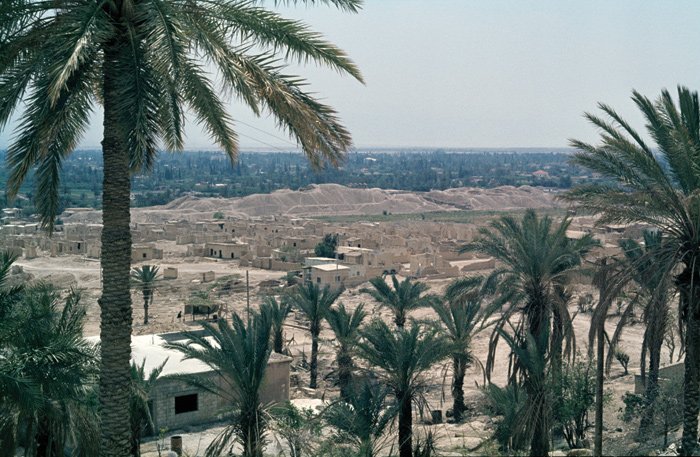
The remains of the Jericho of Joshua’s time is today a heap of ruins. In the Bible, Jericho is called “the city of palm trees.”
It was soon after this time that the Hyksos swarmed into Egypt and oppressed the people. The Egyptians had treated the Israelites to cruel slavery; now it was their turn to be enslaved. Josephus quotes Manetho as saying,
“There was a king of ours whose name was Timaus. Under him it came to pass, I know not how, that God was averse to us, and there came, after a surprising manner, men of ignoble birth out of the eastern parts, and had boldness enough to make an expedition into our country and with ease subdued it by force, yet without our hazarding a battle with them. They afterwards burnt down our cities and demolished the temples of the gods, and used all the inhabitants after a most barbarous manner. Nay, some they slew and led their children and their wives into slavery. . . . This whole nation was styled Hycsos.”6
Scholars have puzzled over the statement that the Hyksos occupied Egypt “without a battle.” Where was the well-trained Egyptian army that should have been ready to repel an invader? Some have suggested it was a slow infiltration; most have written it off as a Manetho blunder, but it is more likely that the Egyptian army was at the bottom of the Red Sea (Exodus 14:28), enabling the Hyksos to pour in “without a battle.” Thus, Khasekemre-Neferhotep I was probably the pharaoh of the Exodus. It is significant that his mummy has never been found.
It is apparent that Manetho got the rest of the story right. He calls them “men of ignoble birth,” which is probably saying they had no culture, and archaeology bears this out. The Hyksos built no imposing temples, left no worthwhile inscriptions, and very few monuments of themselves, though they adopted Egyptian customs and ruled as pharaohs.
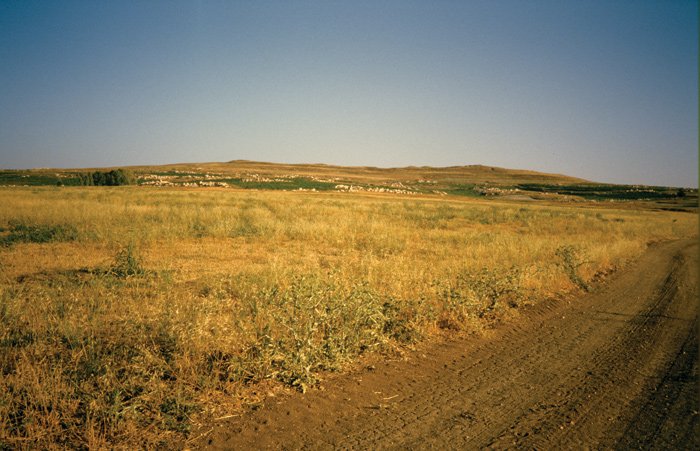
The crossing of the Red Sea by Israel may have been at Adabiya. Ahead of them, the Israelites would have been confronted by a range of mountains that dipped down into the sea. At this point the Red Sea is only 4.3 miles (7 km) wide and a maximum of 26 feet (8 m) deep.
Some historians got carried away with themselves talking about the “mighty Hyksos empire.” A shoddy-looking small sphinx with the name of a Hyksos king was found in Baghdad, and this was supposed to prove that their empire extended to Mesopotamia. Rich tombs in Jericho from this period were called “Hyksos tombs,” as though the Hyksos were buried there. Strong fortifications in Israel erected during the Middle Bronze Period were called “Hyksos fortifications,” with the inference that the Hyksos were running the country.
The Hyksos are credited with introducing the light chariot into warfare in Egypt. The proof for this is that no chariots are referred to in inscriptions before this time, and no chariots are depicted on walls before then. The use of such chariots is supposed to explain how the Hyksos were able to conquer Egypt.
This is all just supposition. A more sober look at them reveals them as an uncultured rabble that were able to keep their hold on a disorganized people reeling from the shattering effects of the ten terrible plagues and the destruction of their army and government.
Neferhotep had a son whose name was Wahneferhotep, but it is significant that he did not succeed his father on the throne. Neferhotep was succeeded by his brother, Sobkhotpe IV, “who occupied the throne which his brother had recently vacated.”7 The historians are unable to ascertain why this son did not succeed his father, Neferhotep. The death of the firstborn in the land of Egypt may be the explanation.

There is plenty evidence of toppled walls and destruction by fire at Jericho, but by traditional dates this was 600 years before the Israelites arrived. A layer of black ash from burnt wood can be seen at the bottom of the picture.
Anyway, the Hyksos moved in soon after. “We know, in any event, that within a very few years after the accession of this king (Sobkhotpe) the ancient town of Avaris, twelve miles south of Tanis, was in the hands of the Hyksos.”8
There is much difference of opinion as to how long the Hyksos ruled Egypt. Josephus quoted Manetho as saying 511 years.9 Most archaeologists have allotted a time span of only about 150 years, not on the basis of inscriptional evidence, but simply to squeeze it into the time frame calculated from their computation of the shaky Sothic Cycle.
Velikovsky and Courville calculate it on the basis of synchronism with biblical chronology. They identify the Hyksos with the Amelekites who attacked the Israelites as they were fleeing from Egypt10 (Exodus 17:8–11). The Amelekites would have learned from the captured Israelites of the destruction of the Egyptian army in the Red Sea and would have taken the opportunity to invade Egypt. According to the biblical record, the Amelekites were annihilated four centuries later by the Israelite king named Saul (1 Samuel 15:7–8), which would explain why they seem to have disappeared into thin air.
Unwrapping the Pharaohs
Adults and children alike are fascinated by Egyptian civilization. But most modern archaeologists have lately tried to use Egyptian chronology to dispute the biblical record. Secular textbooks and videos challenge the faith of students and discredit the biblical account of Exodus. Those who wish to defend the accuracy of the Bible now have an incredible tool in this exciting book that provides compelling confirmation of the biblical account.
Read Online Buy BookFootnotes
- Waddell, History of Egypt and Other Works by Manetho, p. 73-75.
- I.E.S. Edwards, C.J. Gadd, N.G.L. Hammond, and E. Sollberger, The Cambridge Ancient History, Vol. II, Part I, “History of the Middle East and the Aegean Region c. 1800–1380 B.C.” (Cambridge: Cambridge University Press, 1980), p. 44.
- David, The Pyramid Builders of Ancient Egypt, p. 162.
- Ibid., p. 195 and 199.
- Slight variations of the translation are reported. See for example: Immanuel Velikovsky, Ages in Chaos, Vol. 1, “From the Exodus to King Akhnaton” (London: Abacus, 1973), p. 25–28; Courville, The Exodus Problem and Its Ramifications, Vol. 1, p. 129-131; and Lichtheim, Ancient Egyptian Literature, p. 94–101.
- Whiston, Josephus’ Complete Works, Book 1, para. 14.
- Edwards et al., The Cambridge Ancient History, p. 50.
- Ibid.
- Whiston, Josephus’ Complete Works, Against Apion, Book 1, para. 14.
- Velikovsky, Ages in Chaos, p. 53–98; see also Courville, The Exodus Problem and its Ramifications, p. 227–241.
Recommended Resources

Answers in Genesis is an apologetics ministry, dedicated to helping Christians defend their faith and proclaim the good news of Jesus Christ.
- Customer Service 800.778.3390
- Available Monday–Friday | 9 AM–5 PM ET
- © 2025 Answers in Genesis

